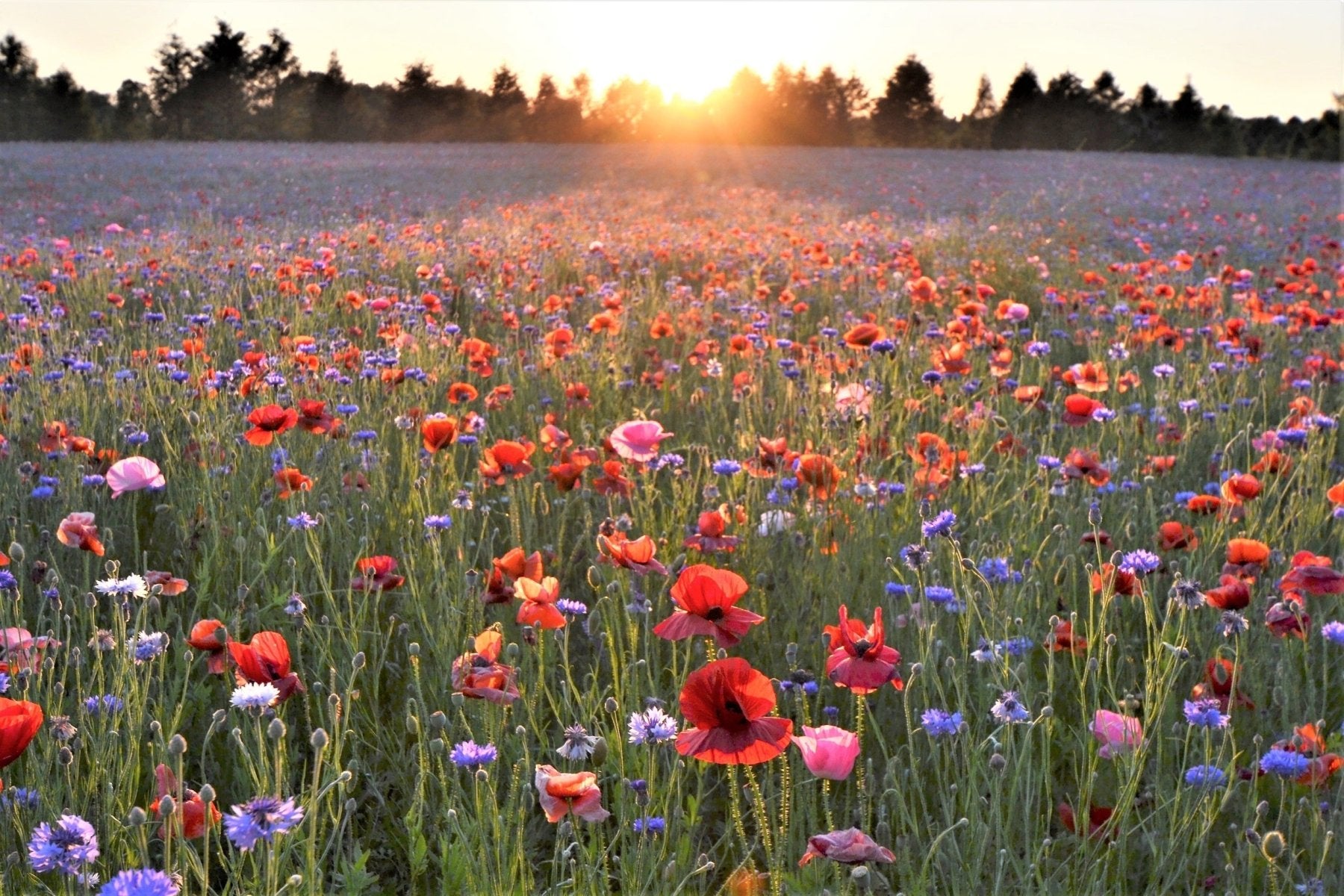Flower fields offer a stunning array of colors and textures that make for breathtaking photographs. Capturing the vast beauty of these landscapes requires some specific techniques to do them justice. Whether you’re visiting a sprawling lavender field in Provence, a vibrant tulip farm in the Netherlands, or simply shooting in your own neighborhood, here are some tips to help you capture stunning photos of flower fields.
1. Choosing the Right Perspective
Get Low to the Ground
Shooting from a low angle can create a sense of depth and highlight the expanse of the flower field. This perspective can also make the flowers in the foreground appear larger and more prominent.
Tips:
- Lie down or crouch to get as close to the ground as possible.
- Use a wide-angle lens to capture the vastness of the field.
Use Leading Lines
Leading lines draw the viewer’s eye through the image and can be very effective in flower fields where rows of flowers create natural lines.
Tips:
- Position yourself so the rows of flowers lead from the foreground into the distance.
- Experiment with different angles to find the most compelling composition.
2. Mastering Depth of Field
Wide Apertures for Isolation
A wide aperture (low f-stop number) can create a shallow depth of field, which is great for isolating a single flower or a small group from the background.
Tips:
- Use an aperture of f/2.8 or wider to achieve a beautifully blurred background.
- Focus on the flower that you want to be the focal point of your image.
Narrow Apertures for Detail
A narrow aperture (high f-stop number) allows for a greater depth of field, ensuring that more of the scene is in focus. This is ideal for capturing the detail of an entire flower field.
Tips:
- Use an aperture of f/11 or higher to keep the whole scene sharp.
- Use a tripod to avoid camera shake due to slower shutter speeds at higher f-stops.
3. Creating Panoramic Shots
Capture the Whole Scene
Panoramic shots can capture the full scope and beauty of a flower field. These shots are particularly effective in fields with vast expanses of flowers that stretch to the horizon.
Tips:
- Use a tripod to keep your camera steady and level as you pan across the scene.
- Take multiple overlapping shots that you can stitch together in post-processing.
Post-Processing Panoramas
After capturing your series of shots, use photo editing software to stitch them together into a seamless panorama.
Tips:
- Ensure that the exposure settings are consistent across all shots to avoid noticeable differences in the final image.
- Use software like Adobe Lightroom or Photoshop for stitching and fine-tuning.
4. Lighting and Timing
Golden Hour Magic
The golden hour, which occurs just after sunrise and just before sunset, provides soft, warm light that can make your flower field photos glow with a magical quality.
Tips:
- Plan your shoot for early morning or late afternoon to take advantage of the golden hour.
- Use the soft light to highlight the natural colors and textures of the flowers.
Overcast Days
Cloudy or overcast days can be ideal for flower photography as the diffused light reduces harsh shadows and enhances the colors.
Tips:
- Take advantage of the even lighting on overcast days for more balanced photos.
- Use a reflector to bounce light onto the flowers and reduce any remaining shadows.
5. Compositional Techniques
Rule of Thirds
The rule of thirds is a classic compositional technique that can help balance your photos and make them more visually appealing. Imagine your frame divided into nine equal parts by two vertical and two horizontal lines. Place your subject along these lines or at their intersections.
Tips:
- Align the horizon with one of the horizontal lines.
- Place a prominent flower or element of interest at one of the intersections.
Include Foreground Interest
Adding elements in the foreground can create a sense of depth and lead the viewer’s eye into the scene.
Tips:
- Use flowers or foliage in the foreground to frame your main subject.
- Experiment with different focal points to see what creates the most engaging composition.
6. Use of Color
Contrast and Complementary Colors
Flower fields often have a riot of colors. Use contrasting and complementary colors to make your photos pop.
Tips:
- Look for color contrasts, such as a field of yellow flowers with a blue sky.
- Use complementary colors (colors opposite each other on the color wheel) to create vibrant, eye-catching photos.
Monochromatic Schemes
Sometimes, focusing on a single color can create a powerful and cohesive image. Fields of lavender or tulips, for example, can look stunning when the emphasis is on their uniform color.
Tips:
- Use a narrow depth of field to blur the background and emphasize the color.
- Experiment with black and white to highlight textures and patterns.
7. Experiment with Different Focal Lengths
Wide-Angle Lenses
Wide-angle lenses can capture the grandeur of a flower field, showing its full expanse.
Tips:
- Use a wide-angle lens to include as much of the scene as possible.
- Get close to a single flower to use it as a focal point with the wide field behind it.
Macro Lenses
Macro lenses are perfect for capturing the intricate details of individual flowers.
Tips:
- Use a macro lens to get close-up shots of petals, droplets of water, or insects on the flowers.
- Pay attention to background elements to avoid distractions and keep the focus on the details.
Photographing flower fields can be an incredibly rewarding experience, offering a chance to capture nature's beauty in vibrant detail. By mastering these techniques, you can create stunning images that do justice to these spectacular landscapes. Additionally, using camera accessories from Cotton Carrier can help you manage your gear more effectively, ensuring you stay comfortable and ready to shoot. With these tips and tools, you're well-equipped to make the most of your flower field photography adventures.





